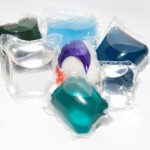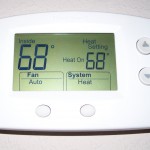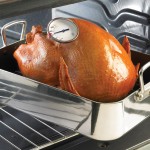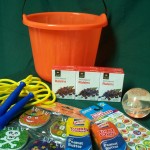by Judy Corbus | Apr 14, 2014
Normal
0
false
false
false
EN-US
X-NONE
X-NONE
/* Style Definitions */
table.MsoNormalTable
{mso-style-name:”Table Normal”;
mso-tstyle-rowband-size:0;
mso-tstyle-colband-size:0;
mso-style-noshow:yes;
mso-style-priority:99;
mso-style-parent:””;
mso-padding-alt:0in 5.4pt 0in 5.4pt;
mso-para-margin-top:0in;
mso-para-margin-right:0in;
mso-para-margin-bottom:8.0pt;
mso-para-margin-left:0in;
line-height:107%;
mso-pagination:widow-orphan;
font-size:11.0pt;
font-family:”Calibri”,”sans-serif”;
mso-ascii-font-family:Calibri;
mso-ascii-theme-font:minor-latin;
mso-hansi-font-family:Calibri;
mso-hansi-theme-font:minor-latin;}

Photo credit: American Cleaning Institute
Are you familiar with the new single-load liquid laundry packets? They are a convenient new laundry product which contains highly concentrated detergent in single pouches. However, if not stored properly, the packets can pose a danger to curious young children leading to injury from ingestion or exposure to the eyes. The American Cleaning Institute urges parents and caregivers to keep these products in a secure location out of reach and sight of young children.
For best results with the laundry packets, follow these tips:
- Like all other cleaning products, keep single-load liquid laundry packets out of the reach of children and pets between every load to prevent unintended exposure.
- For best results, add the single-load liquid laundry packets to the bottom – also known as the drum – of the washing machine, both for top-loader and high-efficiency front-loader machines, before adding clothes. Do not put this product in your machine’s dispenser drawer.
- Do not cut or tear the single-load liquid laundry packets. They are designed to dissolve completely in the machine, even in cold water.
- Read the product label to determine how much product you should use.
- Do not use the single-load liquid laundry packets for washing laundry by hand or to pretreat fabric.
- If the single-load liquid laundry packets stick together, throw them away. The packets can rupture if you try to separate them.
- Handle this product with dry hands only, and remember to close the product container completely after each use to keep out moisture. The film that encases the laundry detergent is designed to dissolve quickly, even in small amounts of water. Store this product away from water.
- Always ensure the re-closable bag or container is tightly sealed after use and during storage.
- As with other laundry products, keep product in its original container with intact labels.
- Store products away from food, as you would with other laundry products.
Take the KEY Pledge (one grand prize winner will receive one electronic gift card in the amount of $2,500.)
- Keep single-load liquid laundry packets out of the reach of children.
- Educate your family and friends about the safe use and storage of these new laundry products.
- You serve a key role in laundry safety.
For more information, watch this short animated video available in both English and Spanish.
Source: American Cleaning Institute
by Judy Corbus | Jan 27, 2014

Set your thermostat to 68 degrees or lower in the winter to reduce heating costs.
Winter definitely is here! Thankfully, we are not shoveling snow here in the Panhandle like our neighbors to the north, but our electric bills most likely have risen as the mercury has dropped. To save money on your winter heating bill, follow these tips:
- Set thermostats no higher than 68ºF when people are home.
- Lower the thermostat when you sleep or are away from home. The Energy.gov website states that if the setback period is 8 hours or longer, savings of as much as 1% for every degree setback can be achieved.
- Put on a sweater or warmer clothing for comfort and lower the thermostat even more. Layer clothing. Closed or tighter cuffs and collars help to retain body heat. An extra blanket or throw will keep you toasty with a lower thermostat setting.
- Use ceiling fans to circulate heated air. Most fans have a switch that allows users to adjust the direction of the fan blade movement. Set fans to move in a CLOCKWISE direction in winter. The upward air flow will move stagnant hot air off the ceiling area and down into the living space. This allows for a lower temperature setting on your heating unit without a reduction in the comfort level.
- To ensure the heat gets to where it is supposed to go, use mastic or foil-faced tape to seal the seams and any cracks in air handling ducts.
- Have the heating system serviced each year to ensure efficient operation.
- Check caulking and weather stripping around doors and windows. Replace as needed to reduce heat loss.
- Clean or replace heating system filters. Dirty filters reduce the efficiency of the heating system and waste valuable fuel. Check filters monthly and clean or replace as directed by the manufacturer.
- Do not place furniture and curtains over or around the heat registers or in front of cold air returns. These items will block the airflow.
- Never use the stove for additional heat. It is dangerous. Besides causing a fire hazard, fumes given off by combustion from gas appliances can result in increased carbon monoxide levels.
- On sunny days, open blinds, shades, and curtains, especially if your windows face south. At sunset, close the blinds, shades, and curtains to help keep heat in your home. This really makes a difference.
For more household energy saving tips, visit the UF/IFAS Energy Efficient Homes series.
Source: No to Low Cost Actions to Save Home Energy and Money
by Judy Corbus | Nov 26, 2013
Normal
0
false
false
false
EN-US
X-NONE
X-NONE
/* Style Definitions */
table.MsoNormalTable
{mso-style-name:”Table Normal”;
mso-tstyle-rowband-size:0;
mso-tstyle-colband-size:0;
mso-style-noshow:yes;
mso-style-priority:99;
mso-style-parent:””;
mso-padding-alt:0in 5.4pt 0in 5.4pt;
mso-para-margin-top:0in;
mso-para-margin-right:0in;
mso-para-margin-bottom:8.0pt;
mso-para-margin-left:0in;
line-height:107%;
mso-pagination:widow-orphan;
font-size:11.0pt;
font-family:”Calibri”,”sans-serif”;
mso-ascii-font-family:Calibri;
mso-ascii-theme-font:minor-latin;
mso-hansi-font-family:Calibri;
mso-hansi-theme-font:minor-latin;}
 The highlight of many Thanksgiving meals is the turkey –juicy, golden brown, and delicious! Before and after it reaches the table, however, follow these steps to reduce your guests’ risk of foodborne illness.
The highlight of many Thanksgiving meals is the turkey –juicy, golden brown, and delicious! Before and after it reaches the table, however, follow these steps to reduce your guests’ risk of foodborne illness.
Thaw the turkey safely:
- In the refrigerator at 40oF or below– allow 24 hours for every 5 pounds. Place the turkey in a container to prevent the juices from dripping on other foods. Cook within 1-2 days.
- In cold water – submerge the turkey in a leak-proof plastic bag in cold water. Change the water every 30 minutes until the turkey is thawed; allow 30 minutes per pound. Cook turkey immediately after it is thawed.
- In the microwave oven – check your owner’s manual for specific instructions for defrosting a turkey. Plan to cook it immediately after thawing because some areas of the food may become warm and begin to cook during microwaving. Holding partially cooked food is not recommended because any bacteria present would not have been destroyed.
For roast turkey, set the oven temperature no lower than 325°F. For optimum safety, cook stuffing in a casserole. If stuffing your turkey, mix ingredients just before stuffing it; stuff loosely. Additional time is required for the turkey and stuffing to reach a safe minimum internal temperature.
APPROXIMATE COOKING TIMES
(325°F oven temperature)
UNSTUFFED (time in hours)
- 4 to 6 lb. breast — 1 1/2 to 2 1/4
- 6 to 8 lb. breast — 2 1/4 to 3 1/4
- 8 to 12 lbs. — 2 3/4 to 3
- 12 to 14 lbs. — 3 to 3 3/4
- 14 to 18 lbs. — 3 3/4 to 4 1/4
- 18 to 20 lbs. — 4 1/4 to 4 1/2
- 20 to 24 lbs. — 4 1/2 to 5
STUFFED (time in hours)
- 8 to 12 lbs. — 3 to 3 1/2
- 12 to 14 lbs. — 3 1/2 to 4
- 14 to 18 lbs. — 4 to 4 1/4
- 18 to 20 lbs. — 4 1/4 to 4 3/4
- 20 to 24 lbs. — 4 3/4 to 5 1/4
Use a food thermometer to ensure your turkey is safe. Insert thermometer in the innermost part of the thigh, wing, and the thickest part of the breast. The turkey is safe at 165°F. Let the bird stand 20 minutes before removing stuffing and carving.
After the big meal, perishable foods should not be left out of the refrigerator for more than 2 hours. Remove all stuffing from the turkey cavity immediately and refrigerate. Cut turkey into smaller pieces and refrigerate. Slice breast meat; legs and wings may be left whole. Refrigerate potatoes, gravy, and vegetables in shallow containers.
Refrigerator-stored cooked turkey and cooked dishes and gravy should be eaten within 3 to 4 days. Reheat leftovers thoroughly to 165°F or until hot and steaming; bring gravy to a rolling boil. In the microwave oven, cover food and rotate dish so it heats evenly.
For longer-term storage, freeze food in airtight freezer containers or bags and use within 4 to 6 months for best quality.
Questions on Thanksgiving Day?
Ask Karen, the virtual food safety representative, is available 24/7 at AskKaren.gov. Weekdays between 10 a.m. and 4 p.m. ET, the USDA Meat and Poultry Hotline is available at 1-888-MPHotline (1-888-674-6854). On Thanksgiving Day, the Hotline will be open from 8:00 am to 2:00 pm Eastern Time.
Happy Thanksgiving!
Source: USDA Food Safety and Inspection Service, www.fsis.usda.gov.
by Judy Corbus | Oct 25, 2013
Normal
0
false
false
false
EN-US
X-NONE
X-NONE
/* Style Definitions */
table.MsoNormalTable
{mso-style-name:”Table Normal”;
mso-tstyle-rowband-size:0;
mso-tstyle-colband-size:0;
mso-style-noshow:yes;
mso-style-priority:99;
mso-style-parent:””;
mso-padding-alt:0in 5.4pt 0in 5.4pt;
mso-para-margin-top:0in;
mso-para-margin-right:0in;
mso-para-margin-bottom:10.0pt;
mso-para-margin-left:0in;
line-height:115%;
mso-pagination:widow-orphan;
font-size:11.0pt;
font-family:”Calibri”,”sans-serif”;
mso-ascii-font-family:Calibri;
mso-ascii-theme-font:minor-latin;
mso-hansi-font-family:Calibri;
mso-hansi-theme-font:minor-latin;}
Normal
0
false
false
false
EN-US
X-NONE
X-NONE
/* Style Definitions */
table.MsoNormalTable
{mso-style-name:”Table Normal”;
mso-tstyle-rowband-size:0;
mso-tstyle-colband-size:0;
mso-style-noshow:yes;
mso-style-priority:99;
mso-style-parent:””;
mso-padding-alt:0in 5.4pt 0in 5.4pt;
mso-para-margin-top:0in;
mso-para-margin-right:0in;
mso-para-margin-bottom:8.0pt;
mso-para-margin-left:0in;
line-height:107%;
mso-pagination:widow-orphan;
font-size:11.0pt;
font-family:”Calibri”,”sans-serif”;
mso-ascii-font-family:Calibri;
mso-ascii-theme-font:minor-latin;
mso-hansi-font-family:Calibri;
mso-hansi-theme-font:minor-latin;}
Normal
0
false
false
false
EN-US
X-NONE
X-NONE
/* Style Definitions */
table.MsoNormalTable
{mso-style-name:”Table Normal”;
mso-tstyle-rowband-size:0;
mso-tstyle-colband-size:0;
mso-style-noshow:yes;
mso-style-priority:99;
mso-style-parent:””;
mso-padding-alt:0in 5.4pt 0in 5.4pt;
mso-para-margin-top:0in;
mso-para-margin-right:0in;
mso-para-margin-bottom:8.0pt;
mso-para-margin-left:0in;
line-height:107%;
mso-pagination:widow-orphan;
font-size:11.0pt;
font-family:”Calibri”,”sans-serif”;
mso-ascii-font-family:Calibri;
mso-ascii-theme-font:minor-latin;
mso-hansi-font-family:Calibri;
mso-hansi-theme-font:minor-latin;}
Normal
0
false
false
false
EN-US
X-NONE
X-NONE
/* Style Definitions */
table.MsoNormalTable
{mso-style-name:”Table Normal”;
mso-tstyle-rowband-size:0;
mso-tstyle-colband-size:0;
mso-style-noshow:yes;
mso-style-priority:99;
mso-style-parent:””;
mso-padding-alt:0in 5.4pt 0in 5.4pt;
mso-para-margin-top:0in;
mso-para-margin-right:0in;
mso-para-margin-bottom:8.0pt;
mso-para-margin-left:0in;
line-height:107%;
mso-pagination:widow-orphan;
font-size:11.0pt;
font-family:”Calibri”,”sans-serif”;
mso-ascii-font-family:Calibri;
mso-ascii-theme-font:minor-latin;
mso-hansi-font-family:Calibri;
mso-hansi-theme-font:minor-latin;}

Give nutritious, tasty foods and non-food items for Fall treats.
With Halloween and Fall Festivals just around the corner, what goodies are you planning to give out? Try nutritious, tasty foods and non-food options, including items that get children up and moving to use the extra calories they consume. Think outside the box when choosing treats for trick-or-treaters or party-goers. The calories in all those bite-size Halloween treats add up quickly. Four “bite size” chocolate bars contain approximately 320 calories, 25 jelly beans have 140 calories, and 20 pieces of candy corn add up to 100 calories.
There are other treats that are lower in fat and sugar and may provide vitamins, minerals, and fiber. Set a good example by passing out healthy treats like these instead of candy:
- cereal bars
- snack packets of dried fruit, baked pretzels, nut and seeds (e.g. peanuts*, unsalted almonds, sunflower seeds or pumpkin seeds)
- trail mix*
- packages of low-fat crackers with cheese or peanut* butter filling
- animal crackers
- goldfish-type crackers
- graham crackers
- 100-calorie packs of various products
- beef or turkey jerky
- single-serve boxes of ready-to-eat cereal
- mini boxes of raisins and chocolate-covered raisins
- fig cookies
- sugar-free gum or hard candy
- gummy candies made with real juice
- individual juice drinks (100% juice)
- pudding cups
- gelatin cups with fruit
- applesauce cups
- single-serve packets of low-fat microwave popcorn
- sugar-free hot chocolate or apple cider packets
*Be careful of peanut and tree nut allergies.
If you choose candy for treats, look for those that are lower in fat and sugar. Choose bite-size candy bars based on the least amount of fat and calories per serving. In addition, consider healthier dark chocolate versions.
Non-food Treats: Children also will enjoy non-food treats** like those typically given in birthday goodie bags:
- small toys and pocket-sized games
- glow sticks
- costume jewelry (plastic rings, necklaces, and bracelets)
- funny Halloween glasses
- false teeth
- miniature magnifying glasses
- tiny decks of cards
- small stuffed animals
- pencils
- pencil toppers and fancy erasers
- markers
- stickers, including reflective safety stickers
- rub-on or stick-on temporary tattoos
- bookmarks
- crayons
- coloring tablets
- paint brushes
- pages from coloring books
- children’s magazines or comic books
- bottles of bubbles
- coins (pennies, nickels, dimes)
- fake money
- whistles
- toothbrushes
- used books
- coupons from a yogurt store or juice bar
**Some treats fit all ages, but small items should be limited to kids over age three.
Treats to Promote Activity: Encourage kids to be more physically active by giving small, inexpensive toys to get them up and moving.
- a bouncy ball
- a jump rope
- sidewalk chalk for drawing a hopscotch or foursquare game
- a beanbag for hacky sack
- a plastic or foam flier
Inspect all Halloween treats before children eat them. When in doubt, throw it out! Inventory your children’s candy, and don’t let them eat too many treats at once. Let kids choose a few pieces of candy to eat on Halloween night and then eat a few pieces each day after that.
Combine a treat, such as a miniature candy bar, with a healthy snack like an apple. Make sure the child eats the apple first so they are less hungry for the treat. This provides them with the health benefits of the apple while teaching them healthier eating habits.
Most candy has a long shelf-life. Put the “treat stash” out of children’s reach and limit them to eating about two pieces of candy a day. Larger treats, such as chocolate candy bars, can be cut into smaller pieces and frozen. Pull them out weeks or months later for some bite-sized treats.
Kids with diabetes can have a few sweet treats, too. The rule is moderation with foods high in carbohydrate, including sweets and starches. Suggest the child choose a few favorite treats and trade in the rest for money or a present.
Show children how much you care about them. Give them treats that help them choose wisely today and begin a lifetime of healthy habits.
Source: Healthy Halloween Treats, Clemson University Cooperative Extension, http://www.clemson.edu/extension/hgic/food/nutrition/nutrition/life_stages/hgic4112.html.
by Judy Corbus | Jun 7, 2013
Normal
0
false
false
false
EN-US
X-NONE
X-NONE
/* Style Definitions */
table.MsoNormalTable
{mso-style-name:”Table Normal”;
mso-tstyle-rowband-size:0;
mso-tstyle-colband-size:0;
mso-style-noshow:yes;
mso-style-priority:99;
mso-style-parent:””;
mso-padding-alt:0in 5.4pt 0in 5.4pt;
mso-para-margin-top:0in;
mso-para-margin-right:0in;
mso-para-margin-bottom:8.0pt;
mso-para-margin-left:0in;
line-height:107%;
mso-pagination:widow-orphan;
font-size:11.0pt;
font-family:”Calibri”,”sans-serif”;
mso-ascii-font-family:Calibri;
mso-ascii-theme-font:minor-latin;
mso-hansi-font-family:Calibri;
mso-hansi-theme-font:minor-latin;}

Mortgage insurance is required if the down payment is less than 20 percent of the home’s sale price.
If you are shopping for a mortgage, be aware of changes to the Federal Housing Administration’s (FHA) mortgage insurance program. Most lenders typically charge a mortgage insurance premium (MIP) if the borrower puts down less than 20 percent of the appraised value or sale price on a home. Mortgage insurance protects the lender should the borrower default on the payments; the mortgage insurance pays off the loan. Mortgage insurance may be underwritten by private corporations or the federal government through FHA.
Once the borrower has paid down 20 percent of the loan (a loan-to-value ratio of 80 percent), they may discontinue paying the MIP. Federal law requires lenders to tell the buyer at closing how many years and months it will take for them to reach that 80 percent level and cancel the mortgage insurance. Lenders must automatically cancel mortgage insurance when the balance hits 78 percent. Until recently, the mortgage insurance on FHA loans could be dropped at the 78 percent loan-to-value ratio or after five years, whichever was longer.
Effective on FHA case numbers assigned on or after June 3, 2013, mortgages financed with less than a 10 percent down payment will be assessed the MIP until the end of the mortgage term or for the first 30 years of the term, whichever occurs first. In other words, most borrowers will pay mortgage insurance premiums for the life of the loan; they will not be able to drop the MIP at 78 percent loan-to-value. This will add to the overall cost of the loan.
If you are planning to purchase a home, do your homework. Check out the various mortgage options available through different lenders and shop around for the best interest rate. Remember, the larger your down payment, the smaller your mortgage and monthly payment. If you can put 20 percent or more down, mortgage insurance will not be required.
For more information, please contact your local UF/IFAS Extension Office.
Sources: http://portal.hud.gov/hudportal/HUD?src=/program_offices/housing/fhahistory
http://portal.hud.gov/hudportal/documents/huddoc?id=13-04ml.pdf
http://www.bankrate.com/finance/mortgages/the-basics-of-private-mortgage-insurance-pmi.aspx





